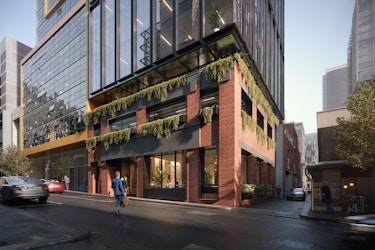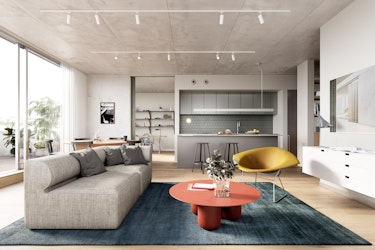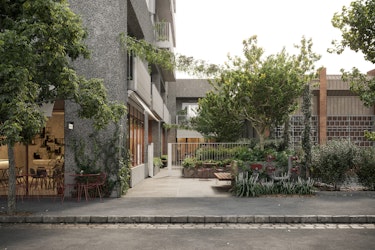The technology and software tools of the design world keep getting better and better, leaving some architects and designers to wonder what they should be using to share finished projects with clients.
Two such options are architectural animation and static rendering. In this article, we’ll share the difference between the two options and why you might choose one over the other. Let’s dive in!
What are architectural animation and static rendering?
Architectural animation creates a video that can show a given design from multiple perspectives. Designers and clients can view the finished product in a more immersive capacity, giving a better idea of the look and feel of the real-life space.
Static rendering, on the other hand, is an image or set of images that show a space from a single perspective. The images look as realistic as possible—as if you were standing in the room and a photo was taken—but they won’t give the same immersive feel as the 3D animation.
With that in mind, how should you choose between the two options? Here are a few factors to consider as you weigh both of your options.
Timeline and budget
You knew this one was coming. Because of the detailed nature of a 3D animation in architecture, projects that use the technology will take more time and money to complete. Work with your clients to understand any internal constraints on these resources.
Why is architectural animation time-consuming and expensive? Although 3D animation involves computer software, it’s a much more complex process than just clicking a button and waiting for the end result. Each element of the design has to be templatized and modeled one at a time, and adding details like texture makes the process even more tedious. The cost and timeframe for a 3D rendering project will reflect this complexity.
Timeline and budget are significant differences between architectural animation and static rendering, so make sure to start here before you get into the more detailed decision-making stages.

Bastion, office building.
Melbourne, Australia | Architect: DKO ArchitectureProject complexity
The next factor to consider is the project’s complexity. For designs that are going to be difficult for the client to envision, the extra time and effort that go into the 3D walkthrough may be worth it. Consider how many perspectives would be necessary to show off the full scope of the space’s design.
If you’d need several angles to bring your vision to life, it may be easier to commit to the animation and have the option to show off every angle. On the other hand, if the space is fairly simple and can be adequately captured from one perspective, static rendering will likely work just fine.
Client preference
Lastly, consider your client’s preference. If they’re especially detail-oriented and will want as much information as possible to understand the design, the animation is probably the way to go. You may also want to opt for animation if the client is paying top dollar for their designs since the extra detail adds a high-quality touch that feels premium.
Static rendering may work well if the client doesn’t need that level of detail or if you’re working on a smaller project where the stakes are lower. In these cases, it may not be worth it to go the extra mile with the animation step. When in doubt, discuss the options with your client to make sure you’re on the same page.

Ultimately, only you and your client can decide what’s the best course of action for your particular project. Most designers have a personal preference, and it may be that you just need to try both options a few times to get a feel for your own style. Just don’t dismiss 3D animation.
